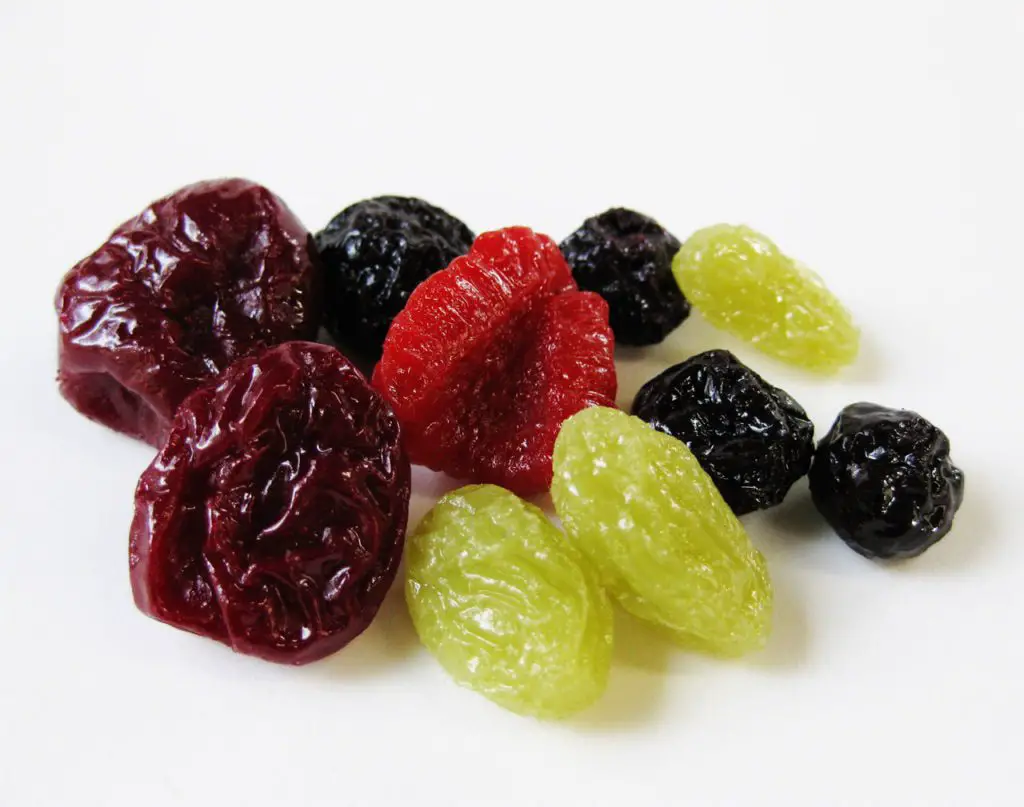Table of Contents
Are Dried Fruits And Vegetables Nutritious?
There is a perennial debate on whether dried fruits and vegetables are nutritious. Some say these dried treats are almost as nutritious as the fresh ones. Others say otherwise, claiming that they are no better than candies.
So who’s right and who’s wrong?

In this article, we will discuss the nutritional value of dried fruits and vegetables with some citations from medical research and studies.
Why Dry Fruits and Vegetables?
The abundance of fruits and vegetables makes it impossible to consume in one season. To prolong its use throughout the year, man had devised different food preservation methods including drying.
Drying is the removal of almost all of the water and moisture content of the food. It shrinks the food in the process making it small but energy-dense dried food. Dried food can last longer on the shelf.
Dried fruits are handy snacks on the go especially on long trips where food preparation is not much needed.
RELATED ARTICLE: A Beginner’s guide on How to Dry Vegetables
The Changes Within
As in any process, drying results in changes within the food. This is where the contention starts: the loss of some nutrients.
But not all are lost in the process. Here are some of the nutritional changes that happened during drying:
- Calorie content became concentrated
- Fiber content has no change at all
- Vitamin A content is fairly retained especially under controlled drying conditions
- Vitamin C content is lost because ascorbic acid is water-soluble and easily destroyed in the heat
- Some of the B vitamins like thiamine (B1), riboflavin (B2), and niacin (B3) are lost during blanching but can be retained during rehydration especially when the water used for dehydration is consumed.
- Some minerals may be lost if the water used for dehydration is not used.
- Iron content does not change.
Talk About Volume
There’s no denying that dried fruits are better than commercially-available chips as snacks. But take it easy on munching a handful of that dried fruit candy.
Let’s start with the numbers. One plum has 30 calories while a piece of prune (dried plum) has 23 calories. Looking at the numbers, you’ll say the prune is better.
Not really.
Fresh plum is a low-energy-dense food while prunes are high-energy dense food. This makes prunes not filling. Therefore, if you compare the fresh plum to its volume, it has low calories actually.
Another example: a fresh apricot has 16.8 calories while two dried halves of apricot have the same amount of calories. This just shows that dried fruits have retained almost the same amount of calories.
Now you know where those people who keep on counting calories are coming from.

Here Are What Experts Say
Numerous medical and scientific studies have found that dried fruits and vegetables are nutritious.
In one analysis of dried figs and apricots, it was found out that dried figs contain a high concentration of calcium, phosphorus, zinc, and copper. On the other hand, dried apricots contained a high concentration of iron and manganese.
In an Australian study, dried sultanas, currants, apricots, and prunes contained copper, iron, potassium, and manganese which is greater than 20% of the daily required dietary intake (RDI). It just shows that eating dried fruit can still meet the dietary requirements of some micronutrients.
Another study on prunes (dried plums) shows that it contains high levels of phenolic compounds than other fruits. Phenolic compounds are antioxidants that are beneficial to our health.
In a US health survey study, improved nutrient intake, high overall diet quality score, and low body weight/adiposity measures were associated with eating dried fruits daily.
Last but not the least, this study focused on how dried fruits may prevent cancer. It states that dried fruits containing antioxidants and anti-inflammatory properties may show promise in cancer prevention. Dried fruits contain phytochemicals like anthocyanins, acetogenins, catechins, coumarins, phenolic acids, terpenes, xanthones, and others which can help in preventing cancer.
Are There Chemicals In Dried Foods and Vegetables?
We mentioned in a previous article that fruits and vegetables need to be pretreated before drying. Pretreatment prevents discoloration and to some extent kills bacteria. However, sulfur used in pretreating agents has affected some asthmatics.
But there are natural alternatives to sulfur and sulfite dips although these alternatives may not be as effective as sulfur does. Ascorbic acid mixture and fruit juice dips are just a few of these.
Final Thoughts
Dried fruit is considered healthy and nutritious. Enjoy them in moderation especially if you’re taking a handful. In spite of the increased calories and reduced nutritional value, dried foods are not that bad.
How about you, what is your favorite dried fruit snack?

